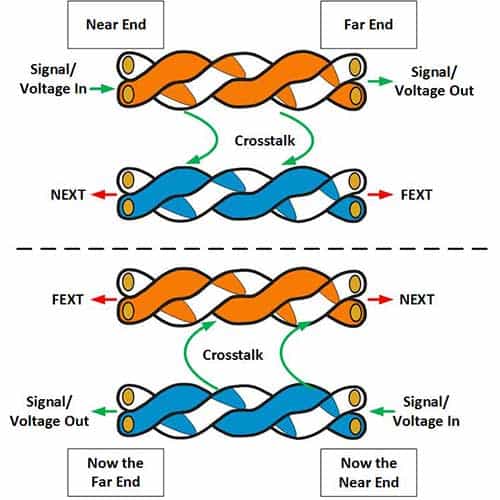Welcome to our exploration of “Crosstalk” – an unseen but influential force in the realm of telecommunications and data networking. While it might sound like a social phenomenon, crosstalk is a technical term used to describe interference caused when signals from one communication channel spill over into another, causing confusion and degrading network performance.
In this article, we’ll dive into the details of what crosstalk is, how it can impact the efficiency and reliability of your communication systems, and the ways to identify its presence. More importantly, we’ll offer practical insights on how to minimize crosstalk, enhancing the integrity of your signals and ensuring your data arrives at its destination, clear and uncorrupted.
What is Crosstalk?
Crosstalk is a form of interference in which signals in one cable induce electromagnetic interference (EMI) in an adjacent cable. The twisting in twisted-pair cabling reduces the amount of crosstalk that occurs, and crosstalk can be further reduced by shielding cables or physically separating them. Crosstalk is a feature of copper cables only – fiber-optic cables do not experience crosstalk.

The ability of a cable to reject crosstalk in Ethernet networks is usually measured using a scale called near-end crosstalk (NEXT). NEXT is expressed in decibels (dB), and the higher the NEXT rating of a cable, the greater its ability to reject crosstalk. A more complex scale called Power Sum NEXT (PS NEXT) is used to quantify crosstalk in high-speed Asynchronous Transfer Mode (ATM) and Gigabit Ethernet networks.
Far end crosstalk (FEXT)
FEXT measures the interference between two pairs of a cable measured at the far end of the cable with respect to the interfering transmitter.
Minimizing crosstalk
Crosstalk can be a problem for unshielded twisted-pair (UTP) cabling. To minimize crosstalk, make sure that
- You don’t untwist or sharply bend the UTP cabling
- The cable ends connected to a patch panel or wall plate are untwisted no more than half an inch